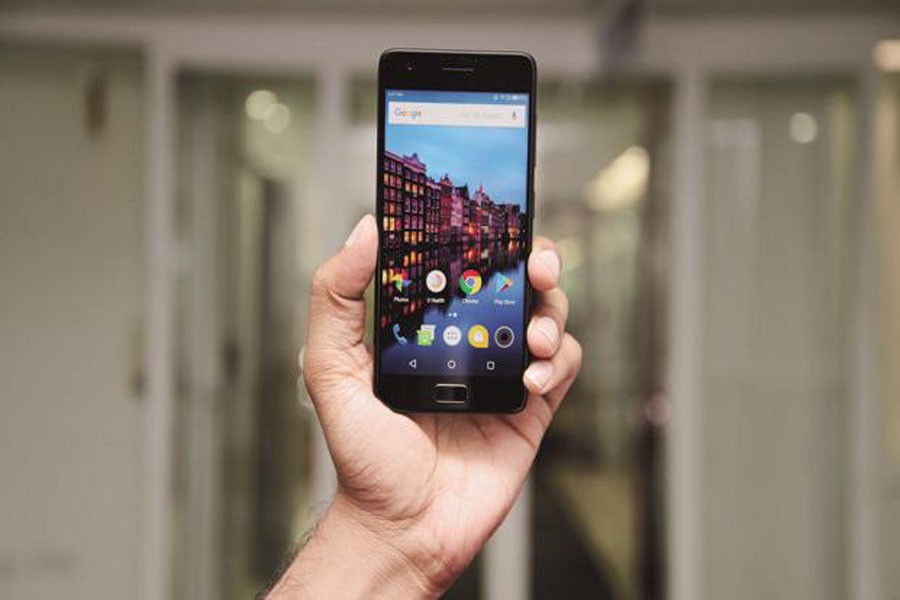There is no denying the fact that Bangladesh has done well in terms of mobile phone use. Even in rural areas, roughly four-fifths of households have at least one cell-phone set. In urban areas, the gadget has made a huge inroad even into slums. Leaving aside some negative effects, the advent of the phone has helped increase both producer and consumer surplus through exchange of information on inputs and outputs. Especially in rural areas, mobile phones have diminished the role of middlemen. Further, these phones have increased connectivity to help timely disaster management.
However, a recent survey titled 'AfterAccess' conducted by LIRNEasia found that Bangladesh has done pretty well in terms of the access to mobile phones but is "still lagging behind its peers in Asia when it comes to graduating to internet usage and its awareness". It is estimated that one-third of the population aged 15-65 in Bangladesh, the larger part of which is working age population, know about the pros and cons of internet while only 13 per cent of the population in Bangladesh use the internet. Internet penetration is reported to be the lowest among the countries surveyed in Asia. It may be mentioned here that, according to the Bangladesh Telecommunication Regulatory Commission, there are about 90 million active internet connections in the country, thus indicating to an internet penetration is more than 50 per cent.
The survey mentioned that it interviewed 2,000 households and individuals from 100 wards and villages in 40 districts. The questionnaires attempted to address a range of topics related to the use of mobile phones, internet, social media and other platforms. The findings from the survey also show that urban-rural digital divide and gender gap are apparent with rural dwellers lagging behind both in India and in Bangladesh (48 and 38 per cent respectively). The gender gap in internet use was markedly large in Bangladesh.
Bangladesh is reported to have the worst gender gap not only in internet but also in mobile phone use as well as access to mobile phone. "The cost of data was cited as a primary limitation to greater use by 30 per cent of the internet users in Bangladesh-the highest amongst the surveyed Asian countries. Some 18 per cent of the survey respondents in India and Pakistan quoted the data cost as a deterrent to greater internet usage, 29 per cent in Nepal and 5 per cent in Cambodia."
Bangladesh though fared better when it came to mobile phone ownership; in fact, it had the highest percentage of mobile phone usage among the Asian countries surveyed. Even a casual rickshaw rider in cities would find that the pullers, the poorest of the social segment, use phones not only for social interactions but also for money transfer.
"Some 74 per cent of the 15- to 65-year-olds in Bangladesh have mobile phones, followed by Nepal at 72 percent, Cambodia at 68 percent, both India and Myanmar at 61 percent, and Pakistan at 57 percent. Pakistan and Bangladesh had very small gaps -- 5 percent and 7 percent respectively-indicating that rural dwellers are almost as likely to a mobile phone as urban dwellers. The gender gap was the highest in India, with women 46 per cent less likely to own a mobile phone than men. In Bangladesh the percentage is 34 per cent, which is lower than Pakistan (37 percent) but higher than Nepal (19 per cent), Myanmar (28 percent) and Cambodia (20 per cent)."
The survey also noticed that about 60 per cent of the population in Bangladesh have internet-enabled handsets, which is the same as in Nepal but higher than India (45 per cent), Pakistan (47 per cent) and Cambodia (58 per cent). Bangladesh, however, has the highest number of users of mobile financial service in all countries surveyed. Around 27 per cent of all mobile phone owners said they used MFS. Other observations of the said survey are as follows:
n Awareness of websites or mobile apps to buy and sell goods or services was not particularly high in Bangladesh and Nepal, according to the survey.
n Less than a quarter of the internet users in Bangladesh are aware of the various kinds of platforms for buying and selling goods and services. "When looking at overall numbers, usage was negligible."
n The main reason cited for non-use of the platforms was the lack of capability to use them, the survey found.
The report highlights the key issues in the telecommunications sector and provides deep insights into the disparity in use of mobile phones, internet, social media and platforms. "It also underscores the potential for growth of a Digital Bangladesh, and we must use this data to inform future policy, regulatory and industry decisions".
The main constraints to the development of the sector, as viewed by experts, are as follows:
First, the mobile operators face huge challenges from the regulatory side, which is holding them back from achieving optimum growth;
Second, Bangladesh has one of the lowest revenue per user but it is amongst the highest taxed countries;
Third, the licensing regime is going against time. There are no consistencies in the policies, which is also hindering investors from investing more;
It thus appears that Bangladesh should liberalise, as far as possible, its regulatory and licensing regime when its internet penetration is very thin. Since the incumbent government is believed to be digital-driven, we hope that proper policies would be pursued in the interest of a digital Bangladesh.
Abdul Bayes is a former Professor of Economics at Jahangirnagar University.


